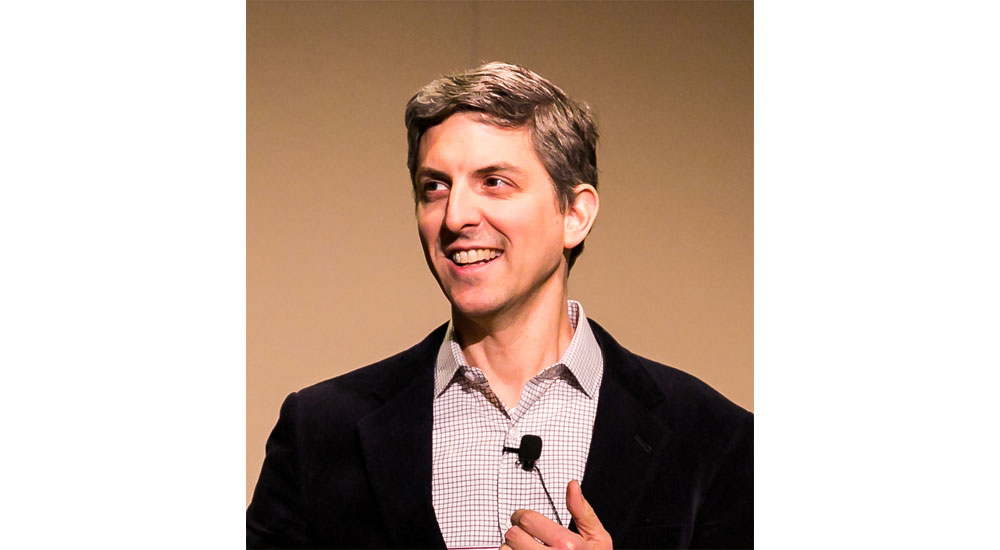On the lighter side of things, we caught up with Crimson Hexagon’s Chris Bingham, to find out what makes him tick.
What would you describe as your most memorable achievement?
Apart from my family, building Crimson Hexagon has been fantastic. We started over 10 years ago with just an academic algorithm and an idea. We’ve built the infrastructure and product to effectively derive consumer insights from 1.2 trillion pieces of public content from over a billion people, for some of the largest and most innovative brands in the world.
What first made you think of a career in technology?
My mum passed away recently – back in the early 60s she worked in the insurance industry and became one of the very first wave of people using computers for business. Throughout my childhood she had technical jobs involving programming and system design. We’d visit her at work quite often and she frequently worked from home, meaning I was exposed to that career from a young age.
What style of management philosophy do you employ with your current position?
People are more important than technology and people problems are harder than technical problems. I have a running joke with my team to say that something is ‘a simple matter of computer programming’. The joke is that it’s usually far from simple, but the truth behind the joke is that if all that’s required to solve a problem is programming, then it’s solvable. The harder things are determining priorities, communicating, resolving disputes and getting consensus, and helping people to learn and grow.
What do you think has emerged as the biggest technology trend of 2018 and why?
Artificial Intelligence has certainly been having a big year. That’s in part because it’s a vague enough term that you can make it mean what you want it to mean. But really, throughout its history, AI has always meant technology that surprises us with its capabilities to do things we didn’t think a computer could do. Once it becomes commonplace, we no longer think of it as AI. As the pace of technological advancement continues to accelerate, we’ll increasingly be surprised by what’s now possible and therefore there will be even more things that we’ll call ‘AI’.
What do you currently identify as the major areas of investment in your industry?
The AI trend has affected our industry of consumer insight by making it possible to get more and more useful insight from unstructured public data, like social media posts. For example, advancements in Machine Learning have made it possible to analyse images and recognise objects, scenes, activities and logos, with pretty good accuracy at a high scale. A large amount of investment is taking place now to continue these types of AI advancements and connect them to useful products.
How do you deal with stress and unwind outside of the office?
I bike to and from work every day and I also play the keyboard in a couple of bands.
If you could go back and change one career decision, what would it be?
In 1997, some friends suggested I join an online book company called Amazon – that might have been a good call.
What are the region-specific challenges when implementing new technologies in Europe?
The data landscape can be different. In the US, you have Twitter and Instagram for example, but those platforms aren’t universally popular in all countries. Also, text analytics can be more challenging when there are many different languages in use. We’re doing a lot of work on Machine Learning advancements to make it easier to deploy things like sentiment and emotion analysis in many different languages quickly and easily, rather than having to build support for each language one at a time.
What changes to your job role have you seen in the last year and how do you see these developing in the next 12 months?
One great thing about my job is that we haven’t run out of interesting new ways to identify consumer insights from different types of data. That’s also challenging to prioritise as we have to balance short-term improvements versus long-term vision.
What advice would you offer somebody aspiring to obtain C-level position in your industry?
There are different types of CTOs. Some are very externally focused and spend a lot of time explaining the company’s vision and technology to customers and analysts. Others are product and technology focused and work closely with the internal teams on architecture decisions. And finally, others are delivery and process focused, working on the team structure and mechanics of software development. (In other companies, the latter role may be filled by a VP of engineering, not the CTO). I’ve been fortunate to be able to spend time in all these areas, but people keen on being a CTO someday should consider which of those roles is the best fit for their interests and skills, and conversely how they can improve their capabilities in the other areas.
Click below to share this article

